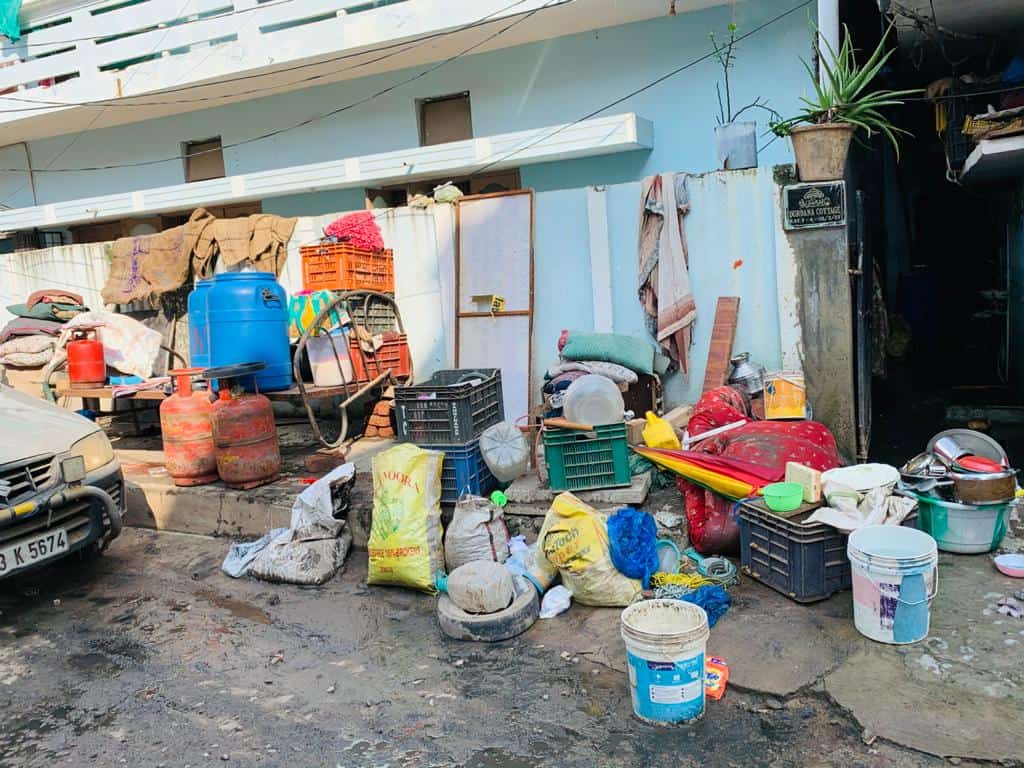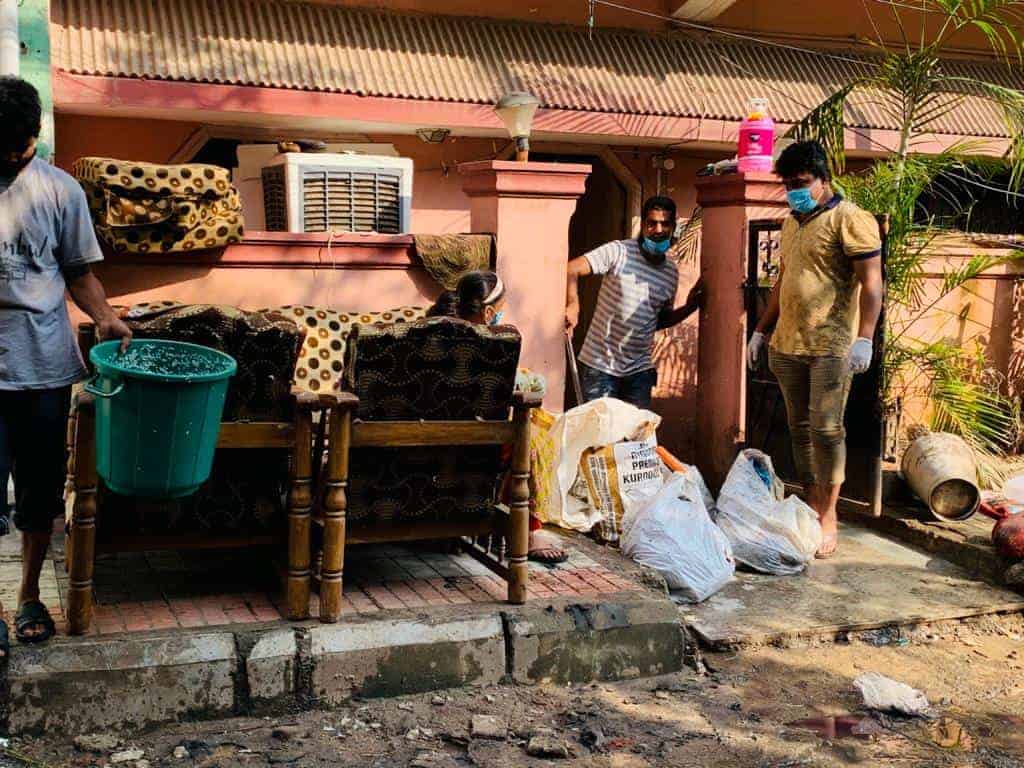Hyderabad: Qamar Begum, a resident near the lower Chaderghat bridge, was busy washing her utensils on a Monday morning. It would seem like any other daily chore for her, but for her, life was restarting after her house was flooded two weeks ago, destroying almost everything inside.

A resident of the low-lying area along the shores of Musi River, on the Chaderghat lower bridge, Begum’s face was expressionless, and tired. Apart from the utensils, a few clothes was all that she could salvage from her house after heavy floods entered her house.
The floods were a result of the Musi River coming to life and ripping across several homes as all 13 gates of the Himayat Sagar dam had to be lifted due to heavy rains that lashed Hyderabad on October 13. It literally drowned several areas, especially low-lying ones at Chaderghat.
Qamar Begum, a flower-seller, lives with her husband, an auto-driver. Both of them now have to restart their lives after the floods wrecked their home. “Everything is lost. I have no more tears left in my eyes to cry. Household appliances, including a TV and a fridge, were all washed away,” said Qamar Begum. They have no other choice but to come to terms with what happened, and to live with it.

Like her, thousands of people in Hyderabad have to live with the trauma of witnessing floods. Two weeks after what happened, they are slowly picking up the pieces of their lives, and have begun to move forward.
Flood-hit areas returning to normalcy
With no more rains being reported, life in the city is returning back to normalcy. Rain water (and slush, and garbage which entered homes) has also come down in severely affected areas like Al Jubail Colony, Hashamabad, Gaganpahad, Hafeez Babanagar, Osman Nagar and Omer Colony.
People have started returning to their wrecked homes, to rebuild their lives. Many, like Begum, found their electrical appliances and furniture ruined, and a thick layer of slime in their homes. The dirt is at least being cleared by the civic authorities in affected lanes.
Meat shops, kirana stores, hotels, paan shops and all other small businesses in the Old City, which was the most affected area, reopened on Monday after being shut for almost one week. “After taking up the cleaning for almost two weeks, I was at last able to restart my meat shop, and recover the losses I’ve suffered due to the floods,” says, Misbah Qureshi who runs a meat shop in Omer Colony of Hafiz Babanagar.
Massive clean-up operations are also on in several places, but much remains to be done by the civic bodies. Roads have to be repaired, as well as Cement Concrete (CC roads) in several areas are yet to be restored. Several thousand vehicles have been damaged, and no one knows how fast or how much they’ll be able to recover from such economic damage.
“As the flood water has receded in the city people are moving back to their homes. They need ready-to-eat cooked food, clothes and an army of electricians, plumbers and carpenters have to cary out repairs,” said Osman Mohammed Khan, a political activist.
Civic authorities have also managed to restore the power supply in several affected areas. G. Raghuma Reddy, Chairman and Managing Director (CMD), Telangana Southern Power Distribution Company Limited (TSSPDCL), said, “Twenty Seven Distribution Transformers (DTR) and 42 poles in Hafeez Baba Nagar were damaged due to floods. In the Hyderabad region, a total of 139 DTRs were not charged due to flood water level in cellars and on roads.” He has assured restoration of power after discharge of water levels.
“Drinking water supply has been stopped for the time being as a precautionary measure to prevent a spread of water-borne disease. We have been assured that it will resume once pipelines are cleaned or replaced,” informed a water board officials. He added that authorities would have to make alternative arrangements for adequate supply of drinking water.
At least 70 people lost their lives, while thousands of others were displaced and properties worth at least Rs. 500 crore was destroyed in Telangana due to the devastating floods that followed after heavy rains on October 13 and 17. About 2,100 families were evacuated and over 37,000 families were affected due to the deluge, forcing several families to temporarily stay in 66 government relief camps.

